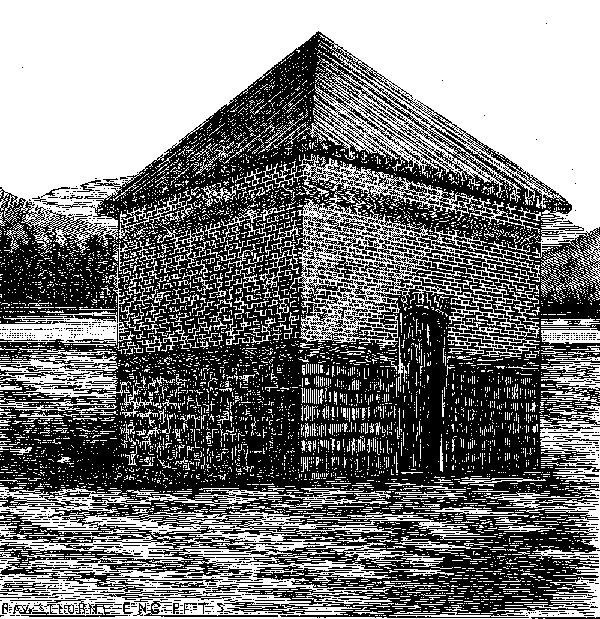The Point: The Block House

- All that Pittsburgh
has left of the once great Fort Pitt which
protected the Ohio Valley for the British crown is the old Blockhouse.
This is a five-sided two-story strong point constructed outside the
palisaded walls of Fort Pitt on the side toward the Point by Col. Henry
Bouquet in 1764.
Because the Blockhouse stood by itself it escaped the wreckers' hammers
when the fort was dismantled, and was used for years as a dwelling
house. (5)
- By the early 1900s,
the area around the Point had degenerated to slum
conditions. In an effort to turn the run-down property into a commercial
district, the Pennsylvania Railroad had laid down tracks, and an
enterprising businessman, Henry Clay Frick, purchased the entire Point
property, except the Blockhouse, from Mrs. Schenley for $2 million in
1902.
Frick's development was thwarted by the small but seemingly invincible
Blockhouse. Frick offered the DAR [Daughters of the American Revolution]
$25,000 to move the little fortress to Schenley Park.
The DAR declared the Blockhouse would not budge. Thus began a long and
fierce court battle, which, after much expense, was resolved in the state
Supreme Court in favor of the Blockhouse. (6)
- On the little plot of
ground cradling the old Block House, and
hallowed by the memories of Fort Pitt and, before that, Fort Duquesne,
and around which much of the Indian history of the United States is
woven, 50 stoical Indians yesterday morning clasped hands with white men
and women, descendants of the men who 150 years ago shed the blood of the
Indians' forefathers.
It was an impressive picture when the half hundred solemn visaged
Iroquois from the "Hiawatha" show, near Aspinwall, stalked into the
grounds of the old weather-beaten relic of frontier days and stood in
sight of the three mighty rivers for whose possession their forefathers,
the English and the French struggled a century and a half ago.
The spectacle was arranged by three patriotic societies, Colonial Dames,
Daughters of the American Revolution and Historical Society of Western
Pennsylvania. As the Indians filed into the little structure they were
greeted by handshakes.
On the backs of several of the squaws were bright-eyed papooses and these
were not forgotten, either. They and several who were able to paddle
their own canoes lined up and each one was given a bag of candy by the
committee.
The red men journeyed to the Point from their camp at Squaw run in street
cars and were received by Mrs. Samuel A. Ammon, president of Allegheny
Chapter, Daughters of the American Revolution at 10 o'clock. When the
shower fell Mrs. Ammon took the squaws and papooses in the caretaker's
house. (7)
Photonote
 rganizations.
rganizations.
 arrative.
arrative.
 utline.
utline.
 eighborhoods.
eighborhoods.
 ain Menu.
ain Menu.

